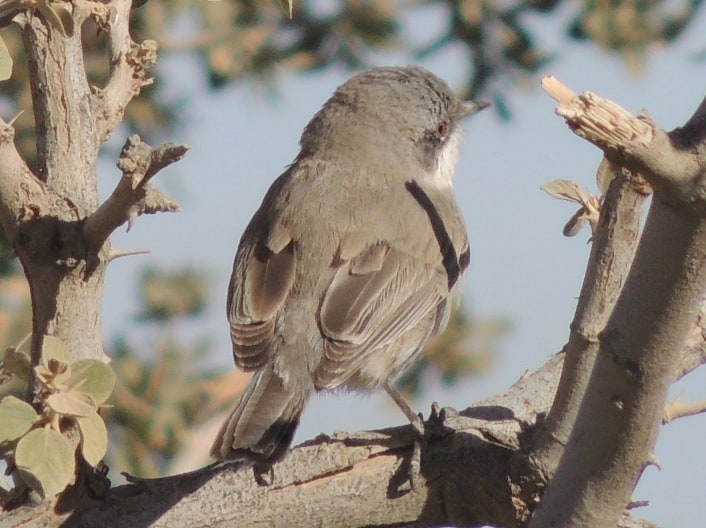Rhawdat Khuraim is an oasis 80 kilometres north west of Riyadh. It proved to be an excellent place for passage birds when visited last spring.

So we visited it again, this time obviously in winter to see what it might hold.

In many ways it was a bit disappointing.


Only two warblers were seen. These were desert whitethroat and Asian desert warbler. Desert whitethoart was very common though we spent far too long trying to identify one particular bird before realising that its abberant colour around the throat was probably caused by it getting too far into some dust.

The most common bird by far was house sparrow followed by white eared bulbul and collared dove. Laughing dove and rock pigeon were also present.

One really positive about Rhamdat Khuraim is that it is the easiest and most guaranteed place in central Arabia to see Arabian babbler. There are often seen close to picnickers too.

The only lark seen was crested lark which was flocking in quite large groups. It only does this in mid winter in these parts. Other birds near-by were desert wheatearoften accompanied by Asian desert warbler and a single Isabelline wheatear which rarely winters north of Riyadh.

Lou and I were discussing with each other why we hadn’t seen any birds of prey over the oasis with its supply of passerines, pigeons and many gerbils. We were hypothesising that the cold morning temperatures might be cramping their style, when just as we were leaving the park we came across an adult or near adult Eastern Imperial eagle.


The two white stripes on its shoulders are useful characteristics to help identification. Strangely the pictures in the Helms guide show these stripes on the perched bird but they have been missed off the pictures of adult and sub adult birds in flight.
Almost all the Eastern Imperial eagle I have seen in KSA have been juveniles. This was a welcome exception that made the visit to RhawdatKhuriam a much better experience than it would have been without.
Robert Tovey
Dr Rob Tovey is a scientist by training and more recently an English teacher. His profession allows him to travel to some of the more difficult-to-get-to places and stay there for years if his inclination takes him. He is a keen bird watcher, blogger and amateur photographer. He has worked in Azerbaijan and Libya and is currently in Saudi Arabia. Rob also has a base in Bulgaria so overall is becoming a bit of birding specialist in very general terms where East meets West.

Leave a Reply